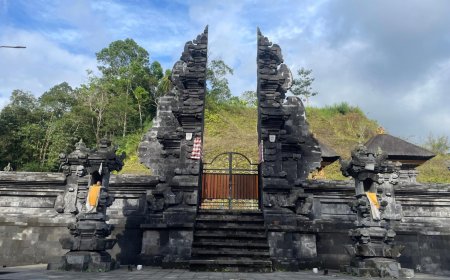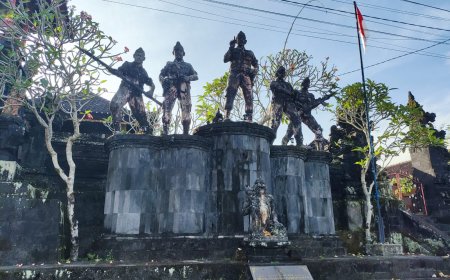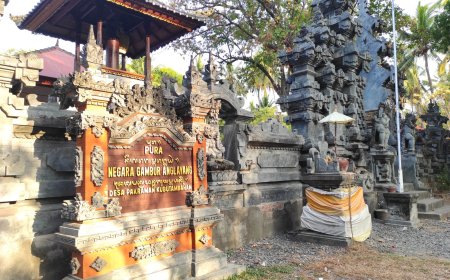Exploring Pura Hyang Tiba Batuan: A Sacred Site of Ancient Balinese Heritage
Pura Hyang Tiba, a Historical Gem in Gianyar, Bali, offers a sacred and tranquil atmosphere. With its collection of ancient statues, sacred springs, and a rich cultural heritage dating back to the 10th century, Pura Hyang Tiba has become an intriguing destination for visitors looking to explore the wealth of Bali's history and culture.
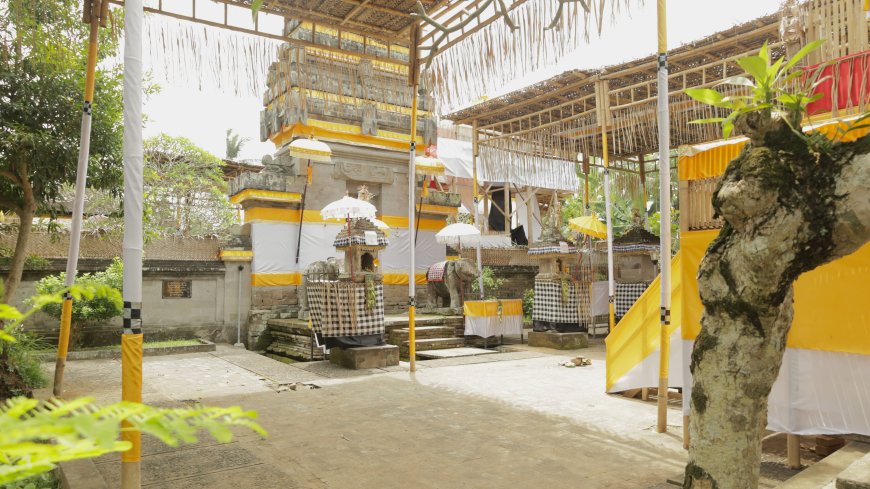
Pura Hyang Tiba is one of the sacred sites located in Desa Sakah, Sukawati District, Gianyar Regency, Bali. This temple shares a close geographical proximity with Pura Canggi and Pura Puseh Batuan, all of which are integral parts of the cultural wealth of the village. The existence of Pura Hyang Tiba is regarded as a silent witness to the long historical journey of Balinese civilization, with traces of its heritage still preserved to this day. Several historical records indicate that Pura Hyang Tiba was first constructed in 829 Saka, or around 907 CE, during the reign of Sri Haji Dharmawangsapangkaja. This information is derived from the Rontal Prakempa manuscript belonging to I Ketut Rinda and various ancient inscriptions. However, another source, the Prasasti Serai AII issued by King Udayana in 915 Saka, or 993 CE, states that the temple was established in the 10th century. The discrepancies in these records enrich the historical narrative of the temple, reflecting the dynamic development of Balinese kingdoms during that era.
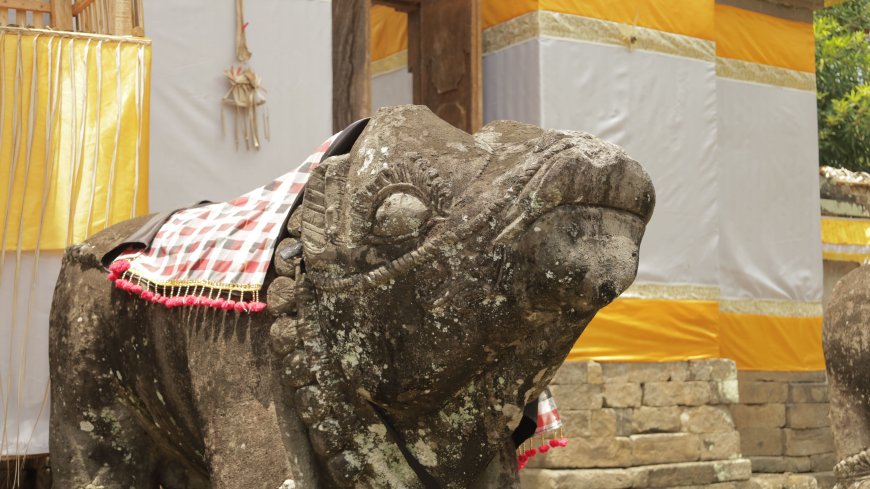
The Cow Statues at Pura Hyang Tiba (Source: Private Collection)
One of the prominent architectural markers at Pura Hyang Tiba is a pair of Dwarapala statues situated at the entrance of the ancient gateway. These statues, depicted as two elephants, rest atop a decorative base inscribed with the candrasangkala, a traditional Balinese chronogram, marking the year 1258 Saka, or 1336 CE. The Dwarapala statues are known as gatekeepers in Hindu mythology, often portrayed in the form of giant creatures or animals believed to possess magical powers to protect sacred places from malevolent influences. In the context of Pura Hyang Tiba, these Dwarapala statues serve as significant spiritual guardians of the temple, adding to the sacred and mystical aura surrounding the site. In addition to the elephant statues, there exists a pair of cow statues within the temple complex. In Balinese Hindu tradition, these cow statues have a close relationship with Shiva, where Nandi the bull is often depicted as the vehicle of the deity. The presence of these statues enriches the religious significance of Pura Hyang Tiba, reflecting the profound connection between spirituality and the traditional art of Balinese carving.
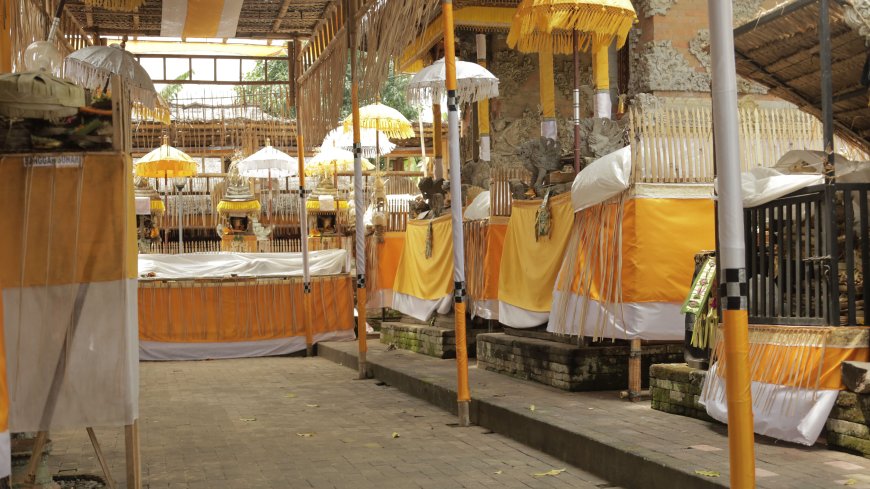
The Central Section of the Temple (Source: Private Collection)
The central area of Pura Hyang Tiba holds vital importance and meaning, as it is where various sacred structures stand for religious rituals. This central courtyard is divided into two sections: the northern and southern parts, separated by a Candi Bentar, a split gate. This Candi Bentar not only serves as a boundary but also features a staircase adorned with serpent carvings, symbolizing strength and protection in Balinese Hindu beliefs. In the northern section of the central courtyard, there are several sacred structures, including Tungkub Tegal, Bedugul, Gedong Penyimpenen, and Sapta Petala, each serving various aspects of worship. Meanwhile, in the southern section, significant structures such as Pelinggih Ratu Hyang Api and Sakti Dewa Brahma are found, dedicated to deities that hold crucial roles in Balinese cosmology. This central area acts as a transitional space between the outer and inner sanctum of the temple, allowing Hindu devotees to prepare spiritually before entering the more sacred areas of the inner courtyard. The existence of these buildings demonstrates the complexity of functions and symbolism within the spatial arrangement of Pura Hyang Tiba, making it a place that is not only visually stunning but also rich in spiritual value.
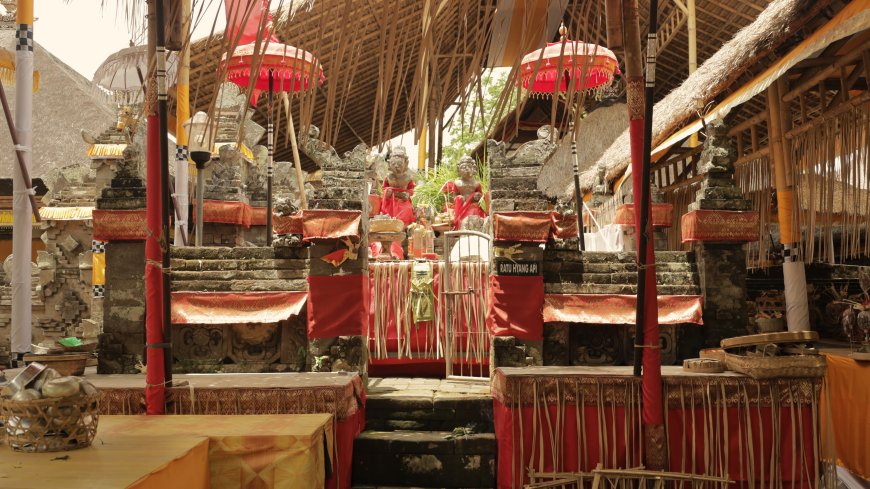
The Shrine of Ratu Hyang Api in the Southern Part of Pura Hyang Tiba (Source: Private Collection)
In the southern part of the central courtyard, there is a unique shrine known as 'Ratu Hyang Api.' The Pelinggih Ratu Hyang Api at Pura Hyang Tiba stands as one of the vital worship places in Balinese Hindu traditions. Ratu Hyang Api is regarded as a manifestation of the power of fire, symbolizing purifying and transformative energy within spiritual life. In Balinese beliefs, fire plays a central role in religious ceremonies, serving both as a medium for offerings to the deities and as a symbol of purification. This shrine, situated in the southern section of the central courtyard, signifies its important position within the ritual structure of Pura Hyang Tiba. Hindu worshippers who come to pray at this shrine often seek blessings in the forms of strength, wisdom, and purity of soul, represented by the element of fire.
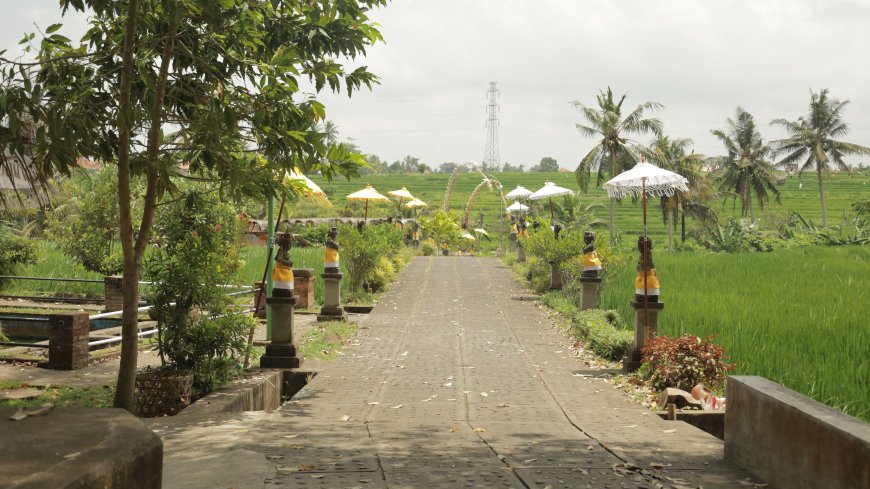
The Path to the Sacred Beji of Pura Hyang Tiba (Source: Private Collection)
Following the pathway located in the southern area of Pura Hyang Tiba leads visitors to a sacred beji situated behind the temple. The path to the beji unfolds breathtaking views, meandering through traditional rice fields that are lush and verdant. The footpath leading to the beji appears to slice through the stunning natural beauty of Bali, with tiered rice terraces characteristic of the subak irrigation system, traditionally managed by the local community. Along this route, visitors can experience a serene and tranquil atmosphere, surrounded by lush trees and the gentle murmur of irrigation water flowing around the rice paddies. The combination of natural beauty and spiritual ambiance creates a harmonious journey, making the trek to the beji not merely a physical endeavor, but also a profound inner journey filled with tranquility.
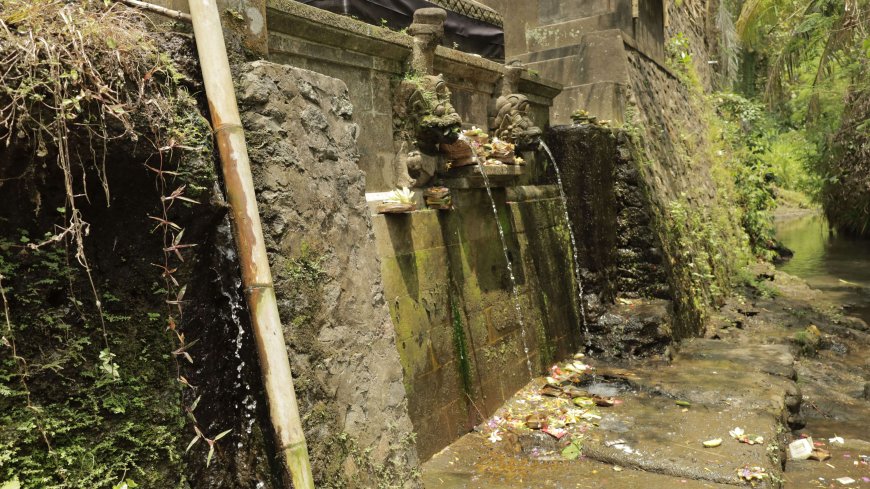
The Main Springs at the Sacred Beji of Pura Hyang Tiba (Source: Private Collection)
Upon reaching the beji, visitors are greeted by two main water spouts that serve as the focal point of the sacred spring. These two spouts are connected to a small river, whose flow leads towards the estuary downstream, carrying the sacred water from the beji to distant locations. The water from these spouts is utilized in the melukat ceremony, where Balinese Hindus undergo a spiritual cleansing by bathing under the flowing water believed to carry purifying energy. The beji is surrounded by lush green cliffs that create a shaded and sacred atmosphere. The clarity of the water cascading from the spouts not only provides physical refreshment but also symbolizes a deep spiritual purification for the visitors and devotees who come to pray.



















































